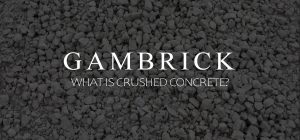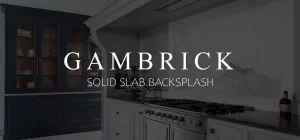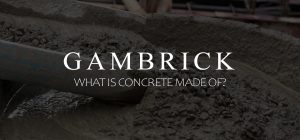
How To Paint Concrete Basement Walls
Painting your concrete basement walls can do more than just improve it’s looks. The right paint can protect your foundation from water damage and prevent mold growth. But before you start painting, clean the walls thoroughly and make repairs where needed. Fill all the small cracks with mortar or caulk and repair large damage with fresh concrete. Since concrete walls are porous, they need to be sealed with primer before painting. Apply one coat of mold killing primer all over the walls. Once that dries, apply two coats of masonry paint. It’s important to use masonry paint because it’s specially formulated to breathe. This is a must have feature when painting concrete walls. Paint and primer can be applied with a brush, roller or sprayer.
Painting concrete basement walls can be a time consuming process, but it isn’t any harder than painting drywall or wood walls. Don’t skip the cleaning or repair steps. If you paint dirty concrete the paint may not stick. You’ll eventually end up with peeling or cracked paint. Repairing wall damage is also important because the cracks will keep getting worse which will also ruin the paint.
Once repairs and cleaning are done it’s time to paint. Using the right paint and primer are crucial. Mold killing primer is important because mold spores can be living inside the wall’s pores. The primer coat will penetrate deep into the wall and kill them. It will also help prevent future growth. Masonry paint is specially made to breathe which is very important on concrete. If you use regular paint it will crack, bubble, flake or peel off.
To see our list of the best paint for concrete walls, click the link.
Ahead we’ll go over the painting process in more detail.
How To Paint Concrete Basement Walls Project Summary
Here’s a quick rundown of what you’ll be doing in case you don’t want to read the entire article.
- Remove furniture, boxes and other items around where you’ll be painting.
- Inspect the walls for water and surface damage, mold and/or stains.
- If you find water damage or wet walls, find the water source and repair it. This could be ground water, leaking pipes, gutters or unsealed concrete.
- Clean mold and stains with mold killer and/or TSP.
- Repair holes, cracks or damage with hydraulic cement and/or caulk.
- Strip old wall paint if necessary.
- Thoroughly clean and dry the walls using a concrete cleanser or soap and warm water. Rub damp rags over the walls to remove dust and dirt.
- Tarp the floors. Use tape and plastic sheets to mask areas you don’t want paint.
- Ventilation is important while painting.
- Make sure the walls are clean and dry before you paint. I you paint dirty or damp concrete, the paint won’t adhere properly.
- Apply at least 1 coat of primer with brushes, rollers or a sprayer.
- Once the primer dries, apply at least 2 coats of paint with brushes, rollers or a paint sprayer.
- Remove masking and clean up.
General Inspection
Inspect your basement walls for damage. Any cracks or large damaged areas need to be fixed before you start painting.
- Fill small cracks with mortar or caulk. You can buy both in a tube. Apply it using a standard caulk gun.
- Repair large damage with cement or concrete. This may involve some demolition if damaged areas need removal to fix.
In the end, the concrete wall’s surface should be solid without any cracks, gaps, holes or damage. If left unrepaired, the damage could get worse and moisture may get into the basement. Water just loves small cracks.
Inspect the wall for exterior insulation, waterproofing and drainage. Go into the basement the next time it rains and look for wet spots. Wet concrete appears darker than dry. If you find a damp wall it’s a sign that the exterior isn’t waterproofed correctly.
If you have damp concrete walls, you should dry them before painting. Bring in a fan and fresh air to pull moisture away from the wall and out of the air.
Condensation is another water problem that doesn’t originate from the outside. It forms when the cooler concrete walls condense the moisture from warm air. The result is water droplets on the concrete. To fix it, bring ventilation and/or a dehumidifier into the basement.
If you find water on the ground it’s probably a drainage issue. Install new gutters or fix the existing ones. You could also install a french drain inside or out. Slope the gutters at least 4 feet away from the foundation so water runs away and doesn’t seep through the walls.
Once you’ve ensured that your basement is water tight and dry, it’s time to clean the walls.
Mold
If you find mold, remove it before you paint. Make sure to wear the proper safety gear because you don’t want to breathe in mold or get it in your eyes.
I use a good quality mold killing liquid. Spray the walls and scrub hard. Then dry the walls. Mold generally wipes right off but can still live inside the concrete’s pores. This is why you need to scrub with a bristle brush.
After I scrub the entire wall with my mold cleaner I let the wall dry. Then I go over it again with soap and water. I use an anti bacterial soap. Scrub the walls again and let them dry.
If you find mold, it’s important to search around for the cause. Water must be getting int the basement from somewhere. It could be through the wall, a leaky pipe, from the ground or in the air. If you’re basement is humid dry it out with fresh air and a dehumidifier.
When in doubt, call a Pro. Mold isn’t something I take lightly. Have your house and ducts inspected because mold spores can quickly spread.
Preparation
Whenever you paint concrete basement walls, it’s very important to do some preparation first. Concrete isn’t like other wall materials. It’s porous, dense and usually contains some moisture. Especially if the walls are exterior. You shouldn’t just go into the basement and start painting.
Here’s a list of things you should do first:
Fill In The Cracks
If you have any gaps, holes or cracks in your concrete, cinder-block, or grout, fill them in with hydraulic cement or caulk before you paint.
Caulk is easier to use than cement. It comes in a standard caulk tube. Just cut the tip, puncture the seal, and squirt it into the cracks. Then smooth it with a tool or your finger. The problem with caulk is that it dries smooth so you can usually see the repairs after you paint.
You can buy a pre-mixed version or mix cement yourself. Use a trowel or putty knife to push cement into the cracks. Smooth the surface with the putty knife or another tool. The nice thing about cement is that it has a gritty texture which usually matches the concrete surface better than caulk.
- Hydraulic cement expands as it dries so don’t over fill the cracks.
- Wait at least 24 hours after repairs are done to do any other work around the area.
- Use caulk to fill in thin cracks and cement for larger repairs.
You can use gloves and your finger to push cement further into the cracks. The deeper you can squeeze cement the better the repair will be. Use a thick rubber glove for this type of work, concrete is porous and can tear non-rubber gloves.
Chisel Cracks & Make Repairs
If your concrete basement walls have any cracks, you’ll have to close those up before painting. Moisture can creep into the cracks and cause mold growth if they’re not repaired properly. And they can spread which will ruin your new paint job.
- Use a sledgehammer and chisel to open the cracks. Make the inside of the crack slightly wider than the outside. This helps keep the patching cement in place. Don’t use too much force, your basically just chipping away lose or damaged pieces of concrete. Hitting too hard can damage the wall further.
- Once finished, vacuum dust and sweep away large chunks.
- Wet the wall where you’ll be making repairs. Moisture helps the fresh concrete bond with the wall. You can also use a bonding agent.
- Next, apply your cement with a trowel. pack material into the crack as deep as possible. Do this while the concrete is still damp.
- If there are gaps at the base of the wall, make sure to seal these as well.
Smooth The Walls
If you paint concrete basement walls for appearances, then a smooth surface is probably something you’d want. Luckily concrete can be sanded or ground down with a wheel grinder.
If you have rough spots that don’t look great, now’s your chance to smooth them out. Use a grinder to remove larger chunks and a bristle wheel to smooth surfaces.You can also use a small chisel to break off chunks but it’s less precise than a grinder.
If you take too much material out and leave a gauge don’t worry, simple patch the area with hydraulic cement.
Tools You’ll Need
Whenever I paint concrete basement walls, I always bring lots of tools that have nothing to do with painting. Concrete usually needs a good amount of prep work. Make sure you don’t skip these steps or the paint may not stick correctly.
- Wire and bristle brushes for cleaning.
- Small sledge and cold chisel to repair cracks.
- Trowel for spreading cement.
- Caulk gun for caulking small cracks.
- Hydraulic cement for larger repairs.
- Cement caulk for smaller repairs.
- Muriatic acid to clean efflorescence.
- Waterproofing mold killing primer.
- Brushes, rollers or paint sprayer.
- Painters tape.
- Plastic sheets for masking.
- Tarps.
- Rags to wipe down walls.
- Buckets for mixing cleaning solutions, cleaning tools or washing the walls.
- Anti-bacterial soap.
Inspect Your Basement Walls For Water Damage
Before you start any prep work or painting, walk around your basement and inspect the walls from top to bottom. Run your hands over your walls feeling for moisture or water. If you find any leaks, droplets, damp areas or seepage issues, you have to find the source of the leak and fix it before you start painting.
Some leaks are easy to fix yourself but some require a Pro. Consider at least consulting with a professional before doing any work yourself.
- If you paint your basement walls when they’re wet or moist, the paint won’t dry correctly. You may also trap moisture inside the wall and possibly cause further damage. never paint a concrete basement wall when it’s wet or damp.
- Basements are prone to water damage because they’re underground and typically have poor circulation. Fix this by installing proper drainage, sealing the walls, creating air flow and installing a dehumidifier.
Aside from the paint issues, damp basements are a breeding ground for mold. Make sure to keep them as dry as possible. And if water does get in, dry it off and bring in lots of fresh air.
Remove Furniture & Lay Down Drop Clothes
Make painting your basement walls easier by moving furniture, storage boxes, or other materials out of the way.
Lay down drop clothes along the walls to prevent spills and drips. Mask around windows are doors or anywhere you don’t want paint.
I recommend using a thick painters drop cloth. They’re heavier and stay where you lay them. I’ve tried the cheaper plastic ones and they get kicked around too much because they’re light.
Plastic sheets are great for masking along with painters tape. I like Frog tape. It’s great because once you remove the tape the line is very sharp. Other paints always seem to leave a jagged line because they bleed a little.
Mask The Windows
If you have basement windows, trim or doors that you don’t want to get paint on, mask them off with plastic and tape. Line each area you don’t want paint with tape and plastic.
I recommend using green Frog tape. It works great and leaves a clean line with very little, if any bleeding.
- Painter’s tape will peel off concrete or cinder-block if it has dust on it. Make sure the surface is clean and dry before you apply tape.
- When you use painters tape on concrete, some bleeding will occur because the surface isn’t totally flat. Use the tape more as a guide then a complete paint blocker.
- Paint over tape with very thin coats. Thick paint has a better chance of bleeding than a thin coat.
Open The Windows
When you paint concrete basement walls, ventilation is very important. Concrete paints and primers can have strong fumes.
If you have basement windows, open them up while you paint. The fumes from mold killing primers and masonry paints can be really strong. This is very important if you’re painting concrete or block walls. Some masonry paint can be toxic depending on the brand and style of paint you choose.
If you don’t have basement windows open a door. Set up a few fans inside the room and aim them at the door. Do whatever you can to bring in ventilation.
If you can’t get any ventilation, wear a good quality respirator mask that can filter out paint fumes. You can buy them at Home Depot or Lowes. Just make sure you buy one that’s for paint fumes and not dust particles.
Strip Old Paint
If your concrete walls have old paint that’s in good shape, you can usually prime and paint right over it. However, if the paint is damaged, flaking, chipping or bubbling, you should remove it first.
Use a wire brush with a back-and-forth motion to scrape old damaged paint off the walls. You can also try a paint scraper to strip the walls if they’re smooth enough. In general, I use a wire brush for block and a scraper for poured concrete walls. But it all depends on the wall and it’s condition. The smoother the concrete, the better a scraper will work.
You don’t have to remove every bit of paint, but you should remove any damaged or thick areas. If the paint is in good condition and was applied correctly, it’s not easy to remove. However, if the paint is in bad shape or wasn’t applied correctly, it may chip off easily.
Another method that’s easier to do is using a grinder with a wire wheel. It’ll strip paint off the walls much faster and easier. Just make sure not to take off concrete with the paint.
- Cinder-block and concrete are essentially the same material. The main difference is that cinder-block has grout in between the joints. This makes paint removal harder.
- Don’t worry if you can’t completely remove the old paint. Focus on damaged areas.
If you don’t remove old damaged paint before applying a new coat, the damage will transfer to your new paint. The chipping, flaking or bubbling will come right through to your new paint. So you have to deal with it first.
Clean Concrete Walls Prior To Painting
After all the repairs, drying and paint stripping has been done, it’s time to clean the walls.
Run a clean cloth over every section of the walls from top to bottom. Vacuum the walls and the floors around them. Get all the dust out of the air too. it’s very important to paint dry, clean concrete walls. If the walls have dust, residue or dirt on them, the primer and paint may not stick.
Don’t simply inspect the walls and assume they’re clean just because they look like they are. Take a rag and wipe them down. You’d be surprised how much can settle in concrete’s pores that you can’t see. All that fine dust or pollen doesn’t just go away when you paint, it gets in the paint or sits between the paint and concrete. Both of which are bad.
If the walls are really dirty, wash them with soap and warm water using a bristle brush or sprayer. Washing will remove any dust or dirt on the walls that a basic wiping won’t get. Make sure to thoroughly dry the walls prior to painting.
- Clean your walls using a wire brush to remove dirt, grime and grease.
- Once you’ve gone over the entire surface, use a wet towel to wipe down and rinse your walls. This removes dust and dirt.
- Vacuum the floors around the walls as needed.
Use Muriatic Acid & Water
Always follow the directions on the bottle when working with acid and wear safety equipment.
Mix muriatic acid with water to create a cleaning solution. This will help remove efflorescence on the concrete wall. It’s that powdery white coating of salt that’s commonly found in masonry.
Wet the wall with the acid solution and then scrub. Keep wetting and scrubbing the wall with a bristle brush until all the efflorescence is removed.
Don’t worry if you find efflorescence, it’s common, easy to clean and usually harmless.
Efflorescence is a powdery white coating of salts commonly found is masonry materials. It’s brought to the surface by water migrating from the interior of the concrete. As moisture passes through the wall, it takes minerals with it. When the water evaporates, the minerals remain. You’ll have to remove it before you paint concrete basement walls. Mix a solution of muriatic acid and water, strictly following the instructions on the label. Wearing safety gear, scrub the surface with a stiff bristled brush repeatedly until all the efflorescence is removed.
Use TSP
Another cleaner that works well on concrete walls is TSP (Trisodium Phosphate). It’s great at removing hard to clean stains like oil and grease from a concrete wall.
Mix a solution of TSP and warm water. Follow the direction on the label for amounts. Work the solution into the stain using a stuff bristle brush. Scrub hard and keep the wall wet until the stain is removed. It may take a few cleaning to remove it all so be patient.
Remove as much oil and staining from the walls as possible before you paint. Depending on what type of stain it is, they may interfere with the paint sticking to the walls properly.
TSP can be harmful so wear safety gear.
Use Mold Killing Waterproof Primer Or Sealant
Once all the repairs, masking and cleaning is done, it’s time to start painting.
Whenever you paint concrete basement walls, the first step is always applying the primer. Even if your walls were previously painted, I still recommend using a primer first. It’s the best way to prep the walls for paint while killing mold spores.
Make sure the primer you use is mold resistant. This will help prevent mold growth long term. Just be aware that strong primers have a lot of fumes and some can be toxic. Use a respirator mask and ventilation.
- Use white primer if you’re painting the walls a lighter color.
- Gray primer is better if you’re painting the walls dark.
- Apply primer with a thick roller, brush or sprayer.
- I recommend using a sprayer or roller for large areas and a brush for edges and trim work.
- Standard rollers designed for drywall don’t work well on rough concrete.
- Some concrete walls can be pretty rough. They’ll tear up cheaper brushes or thin rollers. If the wall is extra rough I prefer spraying. It’s easier to get into all the small spaces and a lot cheaper.
- Inspect the surface after you roll on the primer. If the surface is rough there will be spots primer didn’t touch. Apply primer to these with a brush.
Make sure the primer or sealant you use is designed for concrete or other masonry products. Don’t use primers or sealants designed for drywall on a masonry surface.
Paint The Edges
Once you’ve rolled or sprayed the larger areas of your walls, use a tough brush to paint the edges and corners. I typically like to paint around 3-4 inches from the edges or corners with my brush and then use the sprayer or roller.
Carefully paint around all your windows, doors and trim. When you get to a taped off area, paint with very thin coats. The thinner the paint the better. Wet paint is easier to bleed under tape than thin coats.
Concrete can be very rough, use a brush that’s tough enough to handle it. Cheap brushes can get chewed up pretty fast.
To paint especially porous areas of concrete with a brush, dab the brush head on into the concrete rather than using a typical back and forth sweeping motion. You need to get paint deep into the pores for it to properly seal.
Use A Thick Nap Roller or Sprayer
When you paint concrete basement walls, a thick nap roller or paint sprayer works best for large areas.
Thin rollers are meant for smooth walls that aren’t porous. If you use one on a concrete wall, the paint won’t penetrate into the concretes pores. It will also get chewed up by the concrete’s rough surface.
I recommend using a natural roller with a thick nap. Apply paint to the larger surfaces of your wall using vertical back and forth strokes. Cover each area with your roller several times per coat to fill in all the pores. Leave about the 3 or 4 inches around the top, bottom, and sides of the walls unpainted. These areas will be filled in later using a brush.
Don’t use a foam roller on concrete or cinder-block walls. The pores will rip it apart as you paint.
I prefer spraying the large areas of a concrete wall rather than using a roller. Spraying gets paint into all the concrete’s small pores and rough spots. I usually stay about 6 inches from all the edges when I use a sprayer rather than 3 or 4.
In some cases I may go over the sprayed wall with a roller just to smooth out the paint. This depends on the surface of the concrete wall. You’ll have to make a judgement call to see if it’s necessary.
Paint Trim With An Angled Brush
I use a 2 to 3.5 inch angled brush with natural bristles to paint my trim.
Carefully paint the trim around the edges of each wall, ceiling, floor, corner, window and door. Use even back and forth strokes to paint the trim. Apply several thin coats rather than a single thick one.
Nylon brushes work fine on trim but I prefer natural bristles.
Apply A Second Coat
Whenever I paint concrete basement walls, I always apply at least one coat of primer and 2 coats of paint.
I say at least because some concrete walls need more than just a single coat of primer. In some cases I may apply 2 or 3 primer coats if the wall is really rough. Once you’re done with a coat, let it dry. Then inspect the wall. If you missed spot, go over those areas again. Use a brush to apply primer in hard to reach pores. Or use a sprayer.
Paint is typically thinner and easier to apply. I apply at least 2 coats. In some cases I may apply a third depending on the color. But in most cases two is enough as long as you’ve primed the wall correctly.
Clean Up
When you’re all done painting it’s time for cleanup. I generally don’t clean up until after the last coat of paint has dried. This prevents me from kicking up dirt that can stick to the paint. It’s also more likely that I touch wet paint if I’m moving around near a freshly painted wall. However I clean my tools after every coat. This is especially important if you’re using a sprayer. Don’t let your nozzles get clogged.
Vacuum dust off of the floor, remove tape, tarps and masked areas.
I generally wait a day or two before I move furniture and boxes back into the rooms.
Preventing Mold Growth
One of the most important reasons I paint a concrete basement wall is preventing mold growth. Mold just loves a damp dark place to grow. It lives inside concrete’s pores and feeds on organic material floating in the air.
A great way to kill and prevent future mold growth, is a mold killing primer. But the best way is moisture control. Keep water out of your basement and away from the walls with proper drainage, ventilation, a dehumidifier and a good quality sealant.
Choosing The Best Paint Roller For Concrete Walls
The best paint rollers for painting concrete walls have at least a 1/2 to 1 inch thick nap and are between 4 to 18 inches long. Nap is the thickness of the roller cover that gets covered in paint. Different thicknesses work better on different surface types. In general you should always use a thicker nap for a rougher surface.
Concrete is a very rough and porous material that comes in different types. Some is very dense and smooth while other types are rougher and gritty. Before you select a paint roller you should examine the concrete carefully and determine how rough it is. Thicker nap rollers hold more paint which helps get it into all the concrete’s cracks and crevices. But if your concrete is smooth you can use a roller with a smaller nap.
Paint roller frames come in two common sizes, 4 inches and 9 inches. Another option is a paint roller with a larger frame, or yoke. These are commonly 18 inches in width and are primarily for commercial use. They cost more, but you can get your walls painted in a lot less time.
Paint rollers are a great way to quickly apply paint to large areas while also achieving thorough and even coverage. But not all rollers are created equal.
Using a roller with the right size nap for your wall is very important if you want good coverage. But you also need a roller that’s good quality and can withstand repeatedly rolling over the gritty texture of concrete.
To learn more about choosing the best roller for painting concrete, check out our post The Best Paint Rollers For Concrete.
Summary: How To Paint Concrete Basement Walls
Painting your concrete basement walls can do more than just improve it’s looks. The right paint can protect your foundation from water damage and prevent mold growth. But before you start painting, clean the walls thoroughly and make repairs where needed. Fill all the small cracks with mortar or caulk and repair large damage with fresh concrete. Since concrete walls are porous, they need to be sealed with primer before painting. Apply one coat of mold killing primer all over the walls. Once that dries, apply two coats of masonry paint. It’s important to use masonry paint because it’s specially formulated to breathe. This is a must have feature when painting concrete walls. Paint and primer can be applied with a brush, roller or sprayer.
Painting concrete basement walls can be a time consuming process, but it isn’t any harder than painting drywall or wood walls. Don’t skip the cleaning or repair steps. If you paint dirty concrete the paint may not stick. You’ll eventually end up with peeling or cracked paint. Repairing wall damage is also important because the cracks will keep getting worse which will also ruin the paint.
Once repairs and cleaning are done it’s time to paint. Using the right paint and primer are crucial. Mold killing primer is important because mold spores can be living inside the wall’s pores. The primer coat will penetrate deep into the wall and kill them. It will also help prevent future growth. Masonry paint is specially made to breathe which is very important on concrete. If you use regular paint it will crack, bubble, flake or peel off.
If you have any questions or comments about how to paint concrete basement walls, or other types of concrete, email any time.

John Mazzuca | About | More Posts |
Custom Home Builder
John Mazzuca is a custom home designer and builder at Gambrick with over 25 years experience in the construction industry. John has designed, built and/or remodeled hundreds of homes, small buildings, and commercial projects. He writes about business, real estate, home building, and household electronics. His work has been featured in Fox Business, Better Homes & Garden, House Beautiful, and more.




















